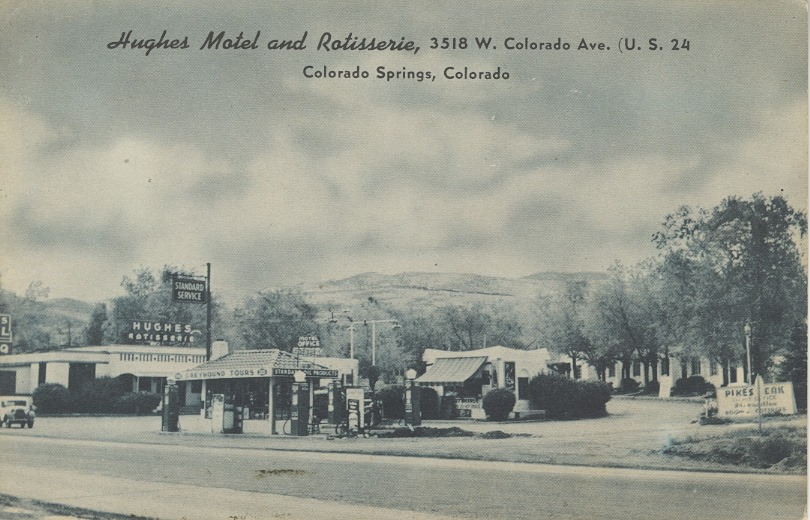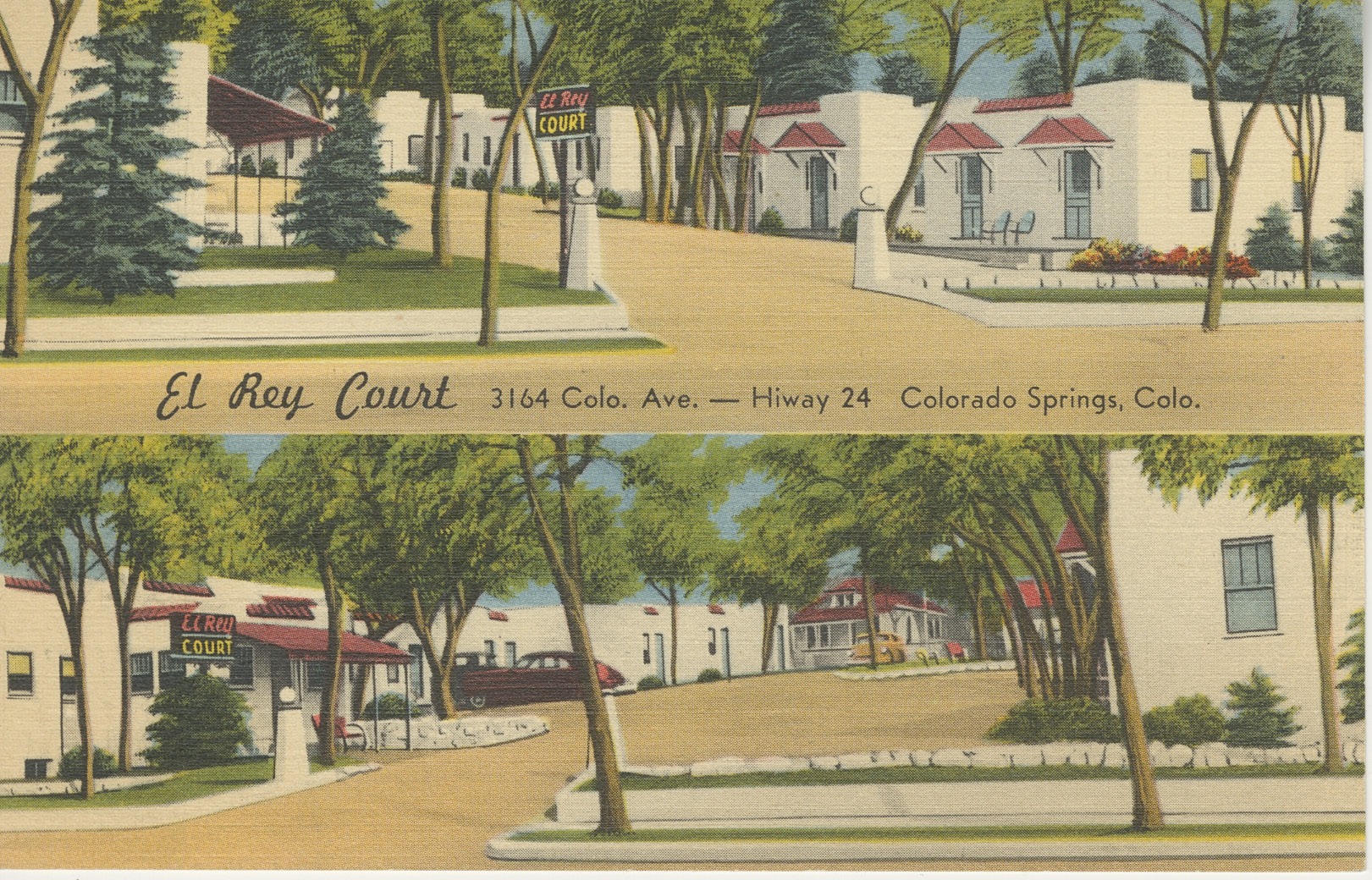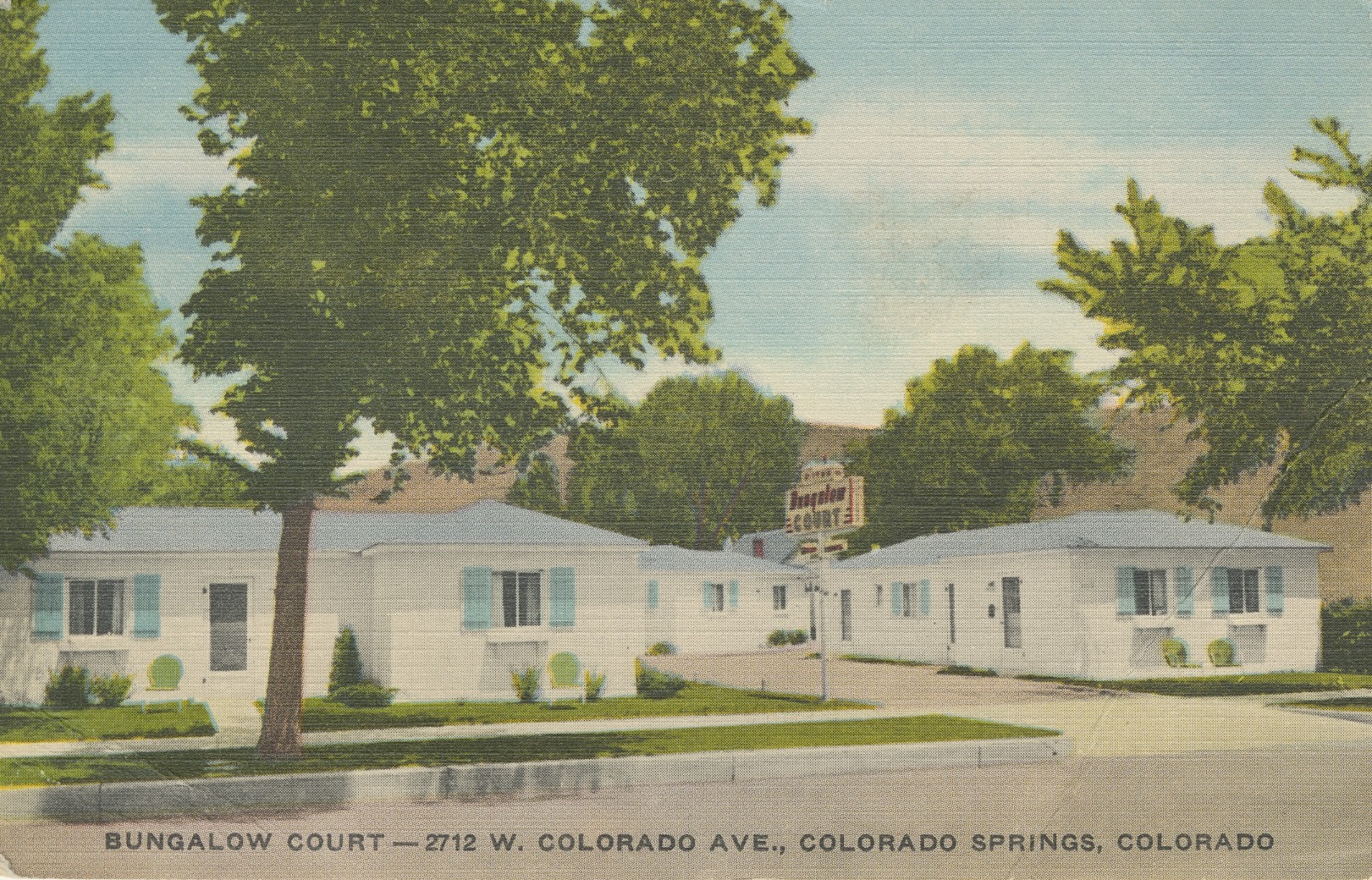This hodgepodge of old motels, a cantina, a dispensary and a drive-up liquor store stretches from Ridge Road to Columbia Street along West Colorado Avenue.
It often feels like an abandoned place, with pockets of deteriorating “Schitt’s Creek” (as an architect friend called it), a few nicely renovated historic motels and cottages, and an endless road of potential.
Think about it. Back in the ’40s and ’50s, this little mile (along with that eastern end of Manitou) was home to all the cool mom-and-pop motor lodges and cottages, their dazzling neon signs drawing family-packed station wagons from the Midwest and beyond. (Some of those motor lodges and cottages still stand!)
You can imagine little Johnny in the way-way-back of the old Woody yelling, “Garden of the Gods, here we come!”
But being a space between spaces, an easily overlooked spot between Manitou and Colorado Springs, this slice of unincorporated El Paso County lost its luster by the ’70s. Many tourists started arriving by plane, and the motor lodges started to look dated and obsolete.
No Man’s Land became a place free of regulation, a place where folks legally sold fireworks and illegally sold other things. (Policing this area became a serious issue.)
But things could be taking a new turn. In recent years, several state and local agencies joined forces to upgrade infrastructure – building a new bridge and upgrading sidewalks and bike trails. They even installed cool old-timey streetlights.
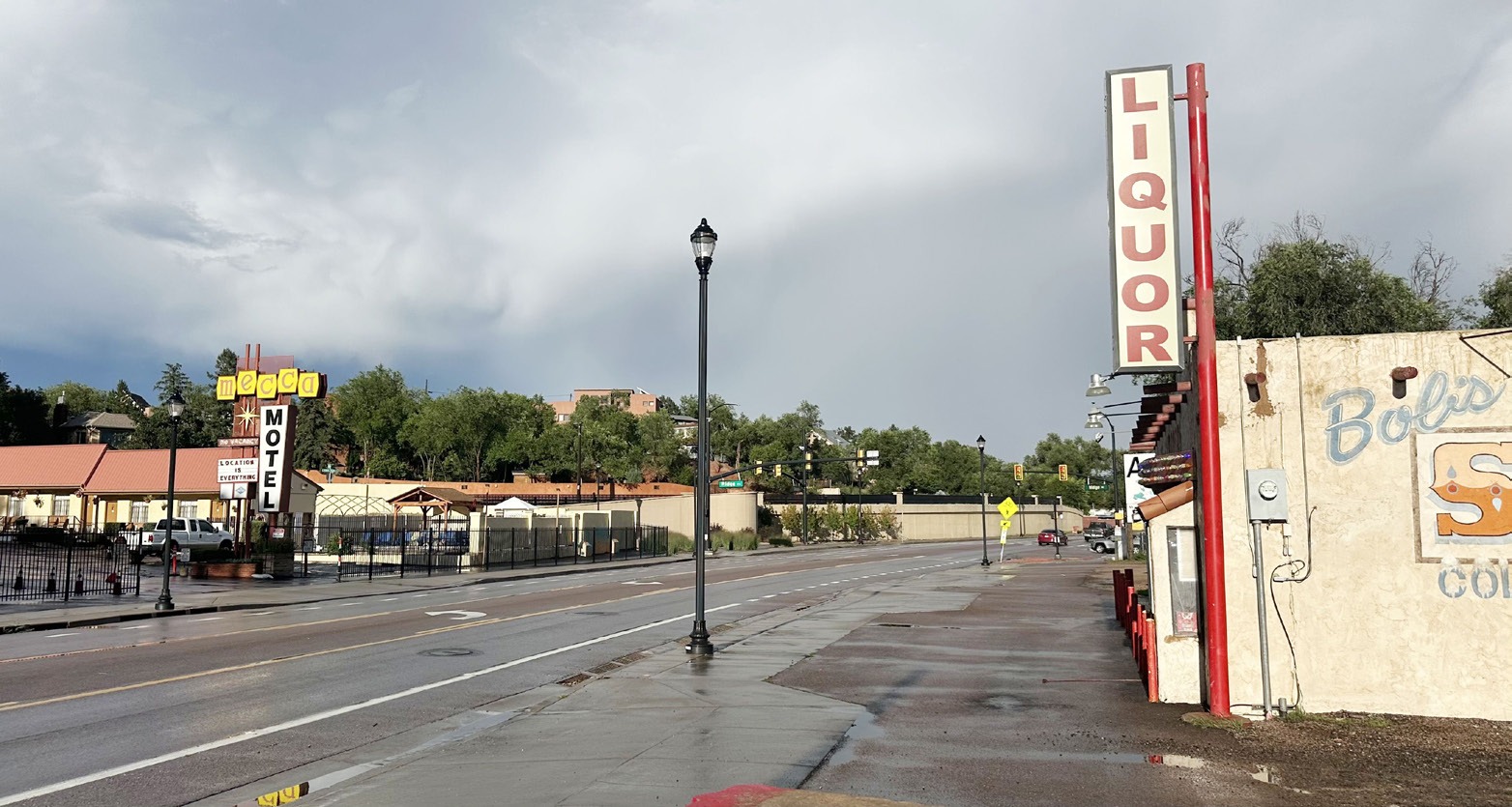
Colorado Springs recently annexed No Man’s Land, making it kind of a Some Man’s Land, as the annexation originally did not include private properties. Owners of private property have been given the option to join the city, and some have, so it’s become a municipal patchwork. One campground is actually partly in the city, partly in the county. (Wonder if that’s a nightmare at tax time.)
The annexation and the improvements are moving the area in the right direction. But one element has remained elusive: Vision.
What does this area want to be? Think about places that have aesthetic vision: Santa Fe’s endless adobe, Palm Springs’ mid-century modern, Route 66’s car-culture vibe. Even Woodland Park enforces its frontier look with strict city codes. (And you were wondering how they got the world’s prettiest Walmart?)
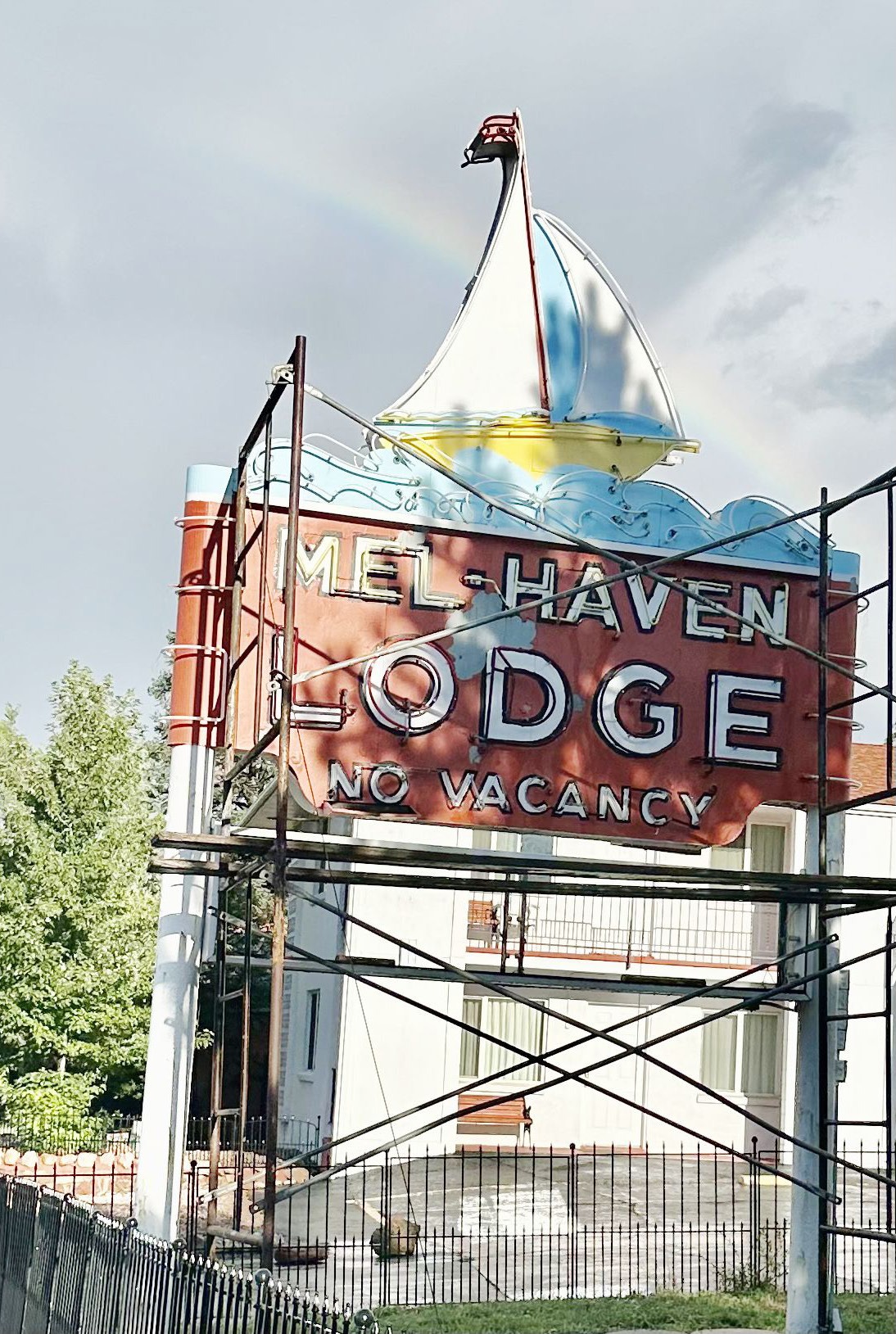
What should the No Man’s Land vision be?
What do you think?
I think we should look back at its history – the cowboy kitsch mixed with vintage neon and mid-century modern styles.
This idea of mixing styles reminds me of a conversation I once had with the late-great-artist-and-embodiment-of-the-Manitou-spirit C.H. Rockey. We were talking about the then-new addition of the Loft Building on Manitou Avenue, with its manufactured stone fronts and Breckenridge vibe.
Here’s the conversation as best I can remember it:
“It doesn’t belong in Manitou,” he said, looking at the then-new building. “It doesn’t fit.”
“How can you say that?” I asked. “You’ve got a slice of Paris over here. The Loop on the end is pure southwest. There’s a ton of Victorians. We’re already a crazy quilt of styles.”
He nodded. Took a moment.
“There’s a difference between style and aesthetics,” he said. “All of those styles here work in Manitou because all those styles fit a single aesthetic.”
When I asked him what that single aesthetic is, he shrugged, smiled (Rockey was a master of the shrug and smile), and said, “Manitou.”
In those five minutes, he taught me something about vision that still leaves me ruminating.
I’ve talked to a bunch of architects who have a much better grasp of city planning than I do, and they agree that this mix of styles would work in No Man’s Land, especially because we have plenty of examples of fine neon, mid-century modern and cowboy kitsch already here.
And by here, I’m including the east stretch east of the U.S. 24 entrance ramp, which, visually, has long been part of No Man’s Land.
Look at the stylish historic (without being stuffy) Timber Lodge and El Colorado Lodge cottages, the old neon signs at the Mel Haven, the Buffalo Lodge and Rainbow Lodge & Inn, and the authentically retro Mo’s Diner.
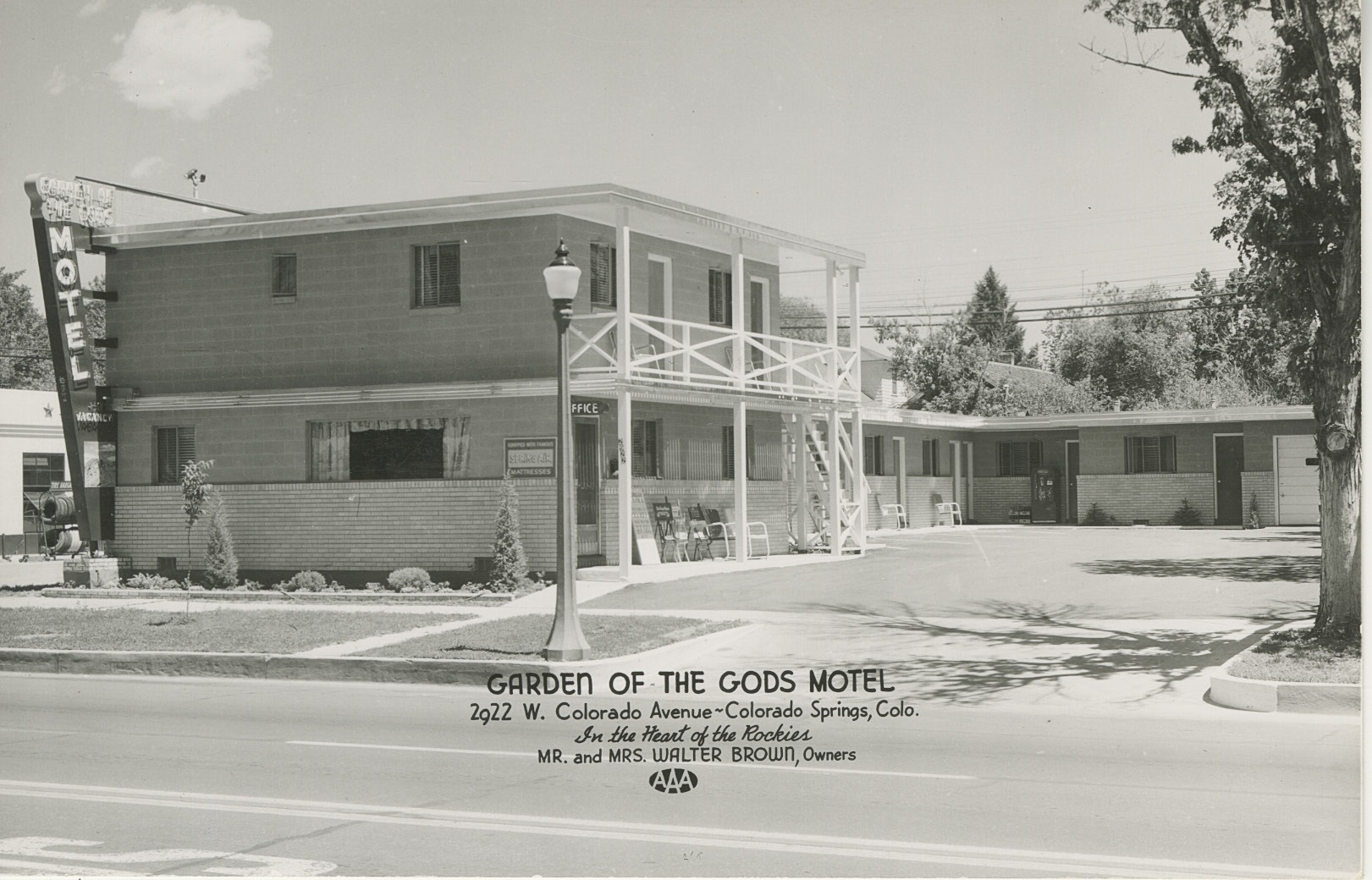
Any serious vision of No Man’s Land must also include its most ignored natural feature. Instead of looking at Fountain Creek as an obstacle (talking to you, Day’s Inn and Holiday Inn Express), we can embrace it as the fabulous natural amenity it is. (Grab a “serious margarita” on the back patio of Amanda’s Fonda on a cool summer evening, and if you don’t get the value of that vibe, have another.)
“That area is ripe with opportunity,” said Jariah Walker, executive director of the Colorado Springs Urban Renewal Authority. “We’re working on a new strategic plan and one of the places that keeps coming up is that area. No Man’s Land has been blighted, and there’s no doubt it could be so much better. It’s a matter of finding private investment, of marketing it, of people seeing what’s possible there.”
Urban planner John Olson, who owns a landscape architecture firm in No Man’s Land, thinks discussions about a vision for the area put the cart before the trolley.
“We should get a trolley – something that’s not a bus,” he said. “It would take tourists from Manitou to downtown.”
Obviously, not a new idea. The region had trolleys running from 1887 to 1932, and there have been several initiatives to try to revive them. But they all had trouble getting traction, given the expense.
But I’m with Olson. As we’ve learned from other cities, that expense would be recouped within a decade or so by increased property values and community momentum.
A trolley would no doubt be the most dramatic and impactful first step in bringing No Man’s Land to its former glory. It’s historic. It’s cool. Tourists would love it. It would help Manitou, Old Colorado City and certainly No Man’s Land.
It’s a heavy lift, for sure, but at some point, those with brains and money will figure out that the best way to the future is through our past.
But there’s another elephant in the room here that must be addressed: the name.
No Man’s Land, named after the area between fighting forces during World War I, doesn’t exactly scream investment opportunity.
Lt. Col. ML Cavanaugh, Ph.D., a fellow with the Modern War Institute, suggested in a Gazette op-ed that we take a cue from Brooklyn’s “Dumbo” neighborhood, short for “Down Under the Manhattan Bridge Overpass.”
His suggestion? NoMaLa.
Maybe. I was thinking MotorLodgia, Moteleria, or borrowing part of a historic motel, Motel Haven.
I bet you can come up with something better. Please send your suggested names, and other ideas you have for NoMaLa to heila@pikespeakbulletin.org.

